Roots will grow through cardboard that has been placed under soil or compost layers after around 3 months. This is when plain cardboard will break down and allow plant roots to grow through. If the roots of plants need to grow through sooner, it is best to put a hole in the cardboard.
You can plant straight away in a no-dig garden if it is prepared with layers of cardboard, compost and aged manures. Start by planting shallow rooted plants like annual flowers or make a hole in the cardboard for larger plants.
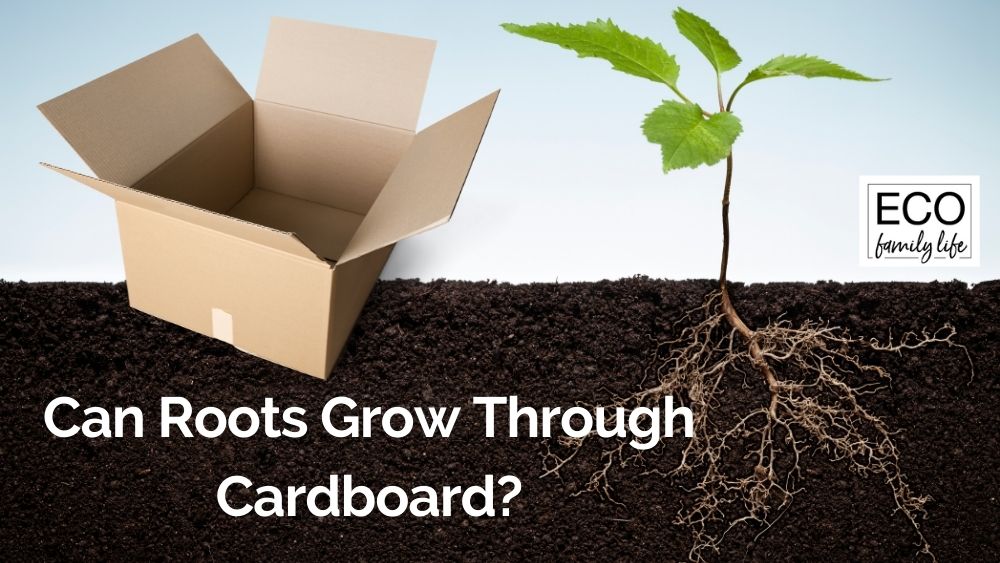
I have been setting up my new no-dig garden and have taken both approaches. I have buried the cardboard under around 4 inches of compost so that my annual flowers can establish. By the time their roots get deep enough to reach the cardboard it will be breaking down and they can reach the deeper ground soil.
When cardboard breaks down in a no dig garden
Cardboard is a great base for a no-dig garden. The cardboard will start to become soft and break down so roots can grow through within 3-6 months. Thin cardboard will break down within 3 months but thick, packing cardboard can take 6 months or longer.
If you have created your own no-dig garden with layers of compost, aged manure and straw mulch then you can expect that the roots of the plant on top to grow through the cardboard in 3-6 months.
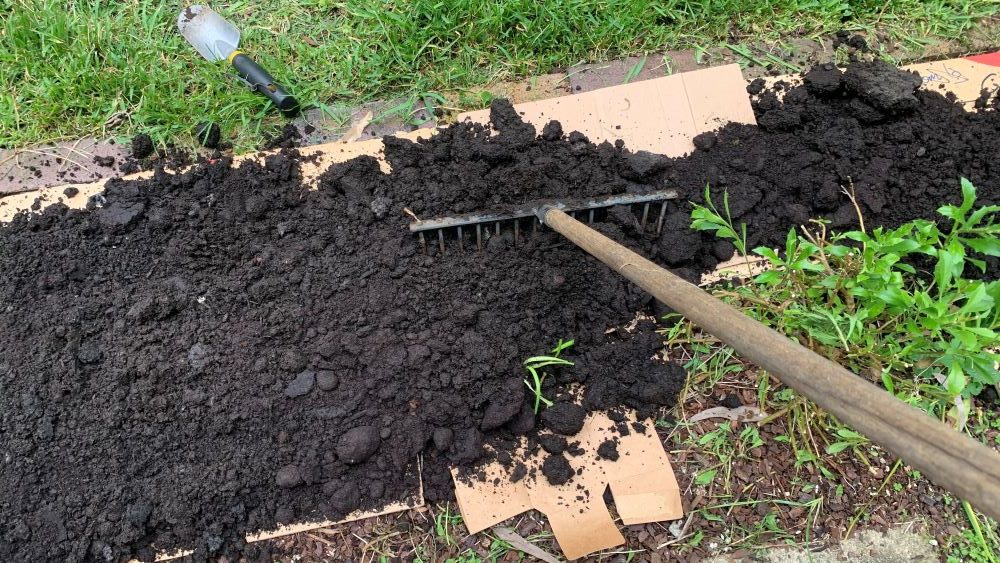
If you have large plants that you want to reach the ground soil sooner, make a hole in the cardboard so they can reach the ground soil. Create a hole big enough for the roots of the plant to grow through but small enough to stop weeds from sneaking through.
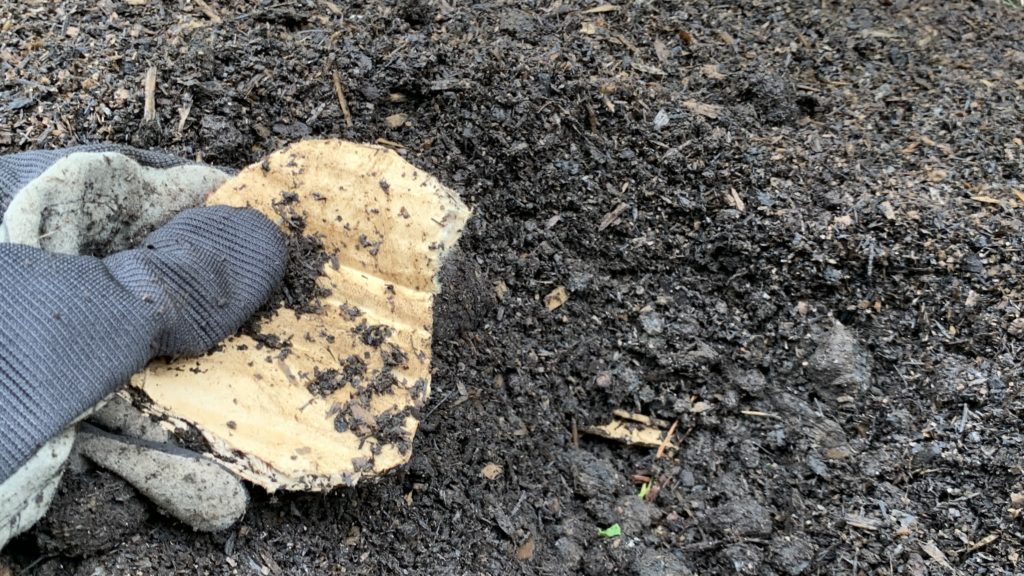
Will root grow through dry cardboard?
If you place dry cardboard on top of the soil and do not cover it with anything organic like compost then it will break down very slowly. It could take over 6 months to break down which means that roots will not grow through the cardboard.
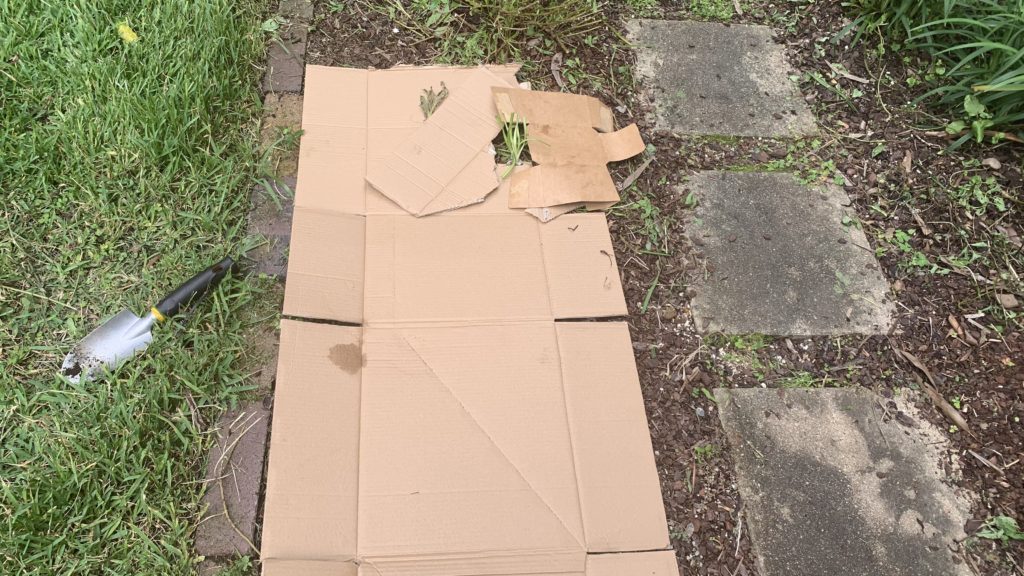
This is great for stopping weeds from growing through from underneath. the cardboard will stop the sun from reaching the weeds or weed seeds in the soil. Cover the cardboard with bark mulch to set up a new garden bed, ready for planting in 6 months time.
Dry cardboard placed on the surface of soil will take a long time to break down and can easily blow away. Cover it with 2-3 inches of bark mulch instead to help to keep it in place and allow the soil bacteria and worms to break it down slowly and improve your soil. You can also layer compost, potting soil and aged manure to start growing straight away.
Can you plant on top of cardboard?
You can plant on top of cardboard if you have enough soil depth to support plant roots for 3-6 months. Small, annual flowers like violas and petunias are perfect for growing on top of shallow no-dig garden beds. These can grow in 4 inches of soil until the cardboard break down.
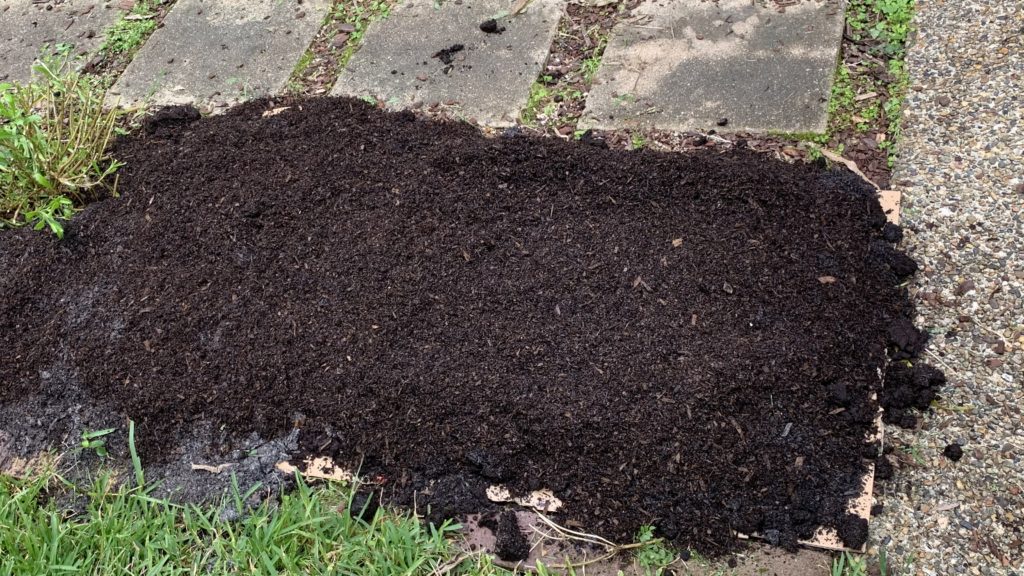
After 3-4 months the cardboard will have broken down and the roots can reach into the ground soil. Any cardboard that is not covered with soil will take much longer to break down. It will have less contact with soil bacteria and worms. Cover all areas of the cardboard with compost to help it break down fast.

How long does it take for cardboard to decompose under soil?
Cardboard will generally take anywhere from 3 months to 6 months or more to break down under soil. If you are using cardboard to stop weeds and topping it with mulch, you can expect it to last closer to 6 months.
If you are using cardboard as a base of your no-dig garden or lasagna garden, then it can take around 3 months for the cardboard to break down under the organic matter layers. I like to layer thicker cardboard for my no dig gardens so it breaks down slower. This gives it more time to smother weeds.
I like to use heavy duty packing boxes because they are plain cardboard and almost twice as thick as regular cardboard boxes.
Can seeds grow through cardboard?
Seeds will not grow through cardboard so it is best to layer seed raising mix on top of layers of compost and aged manure. A perfect new vegetable garden would have a layer of cardboard, compost and aged cow manure all mixed together. Layer ½ an inch of seed raising mix on top of the compost and you have the perfect space to plant new seeds.
Will plant roots grow through paper?
Plant roots will eventually grow through plain copy paper or newspaper if it is used as the base of your no-dig garden. Newspaper will break down in 2-3 months if it is kept moist and is covered with good quality compost.
Compost will contain lots of bacteria which will break down the newspaper quickly. Worms will dig their way up from the deeper ground soil to eat the paper and the soil bacteria. The paper will help to improve your soil over time.
If you want to create a no-dig garden where the roots reach the ground soil quicker, use newspaper instead of cardboard. It breaks down fast and allows the roots to grow through sooner.
How cardboard improves soil
Cardboard will be broken down by bacteria and worms to add extra organic matter to the soil. This helps to add oxygen, carbon, allows the soil to drain well and improves soil. It can improve sandy and clay soils and over time and will break down in 3-6 months.
Will Roots Grow Through Cardboard? | Summary
Roots of plants will grow through cardboard once it becomes moist, is breaking down and there are gaps for the roots to reach through. Thick cardboard will block most plant roots until it softens and starts to break down over 6 months. Thinner cardboard or paper will break down in 3 months or less. If you want plant roots to grow through quicker, cut a hole in the cardboard to allow this.
Happy growing.
I am an accredited practicing dietitian, experienced gardener and a dedicated cook. I love writing and sharing my experience so you can learn from my successes and mistakes.
